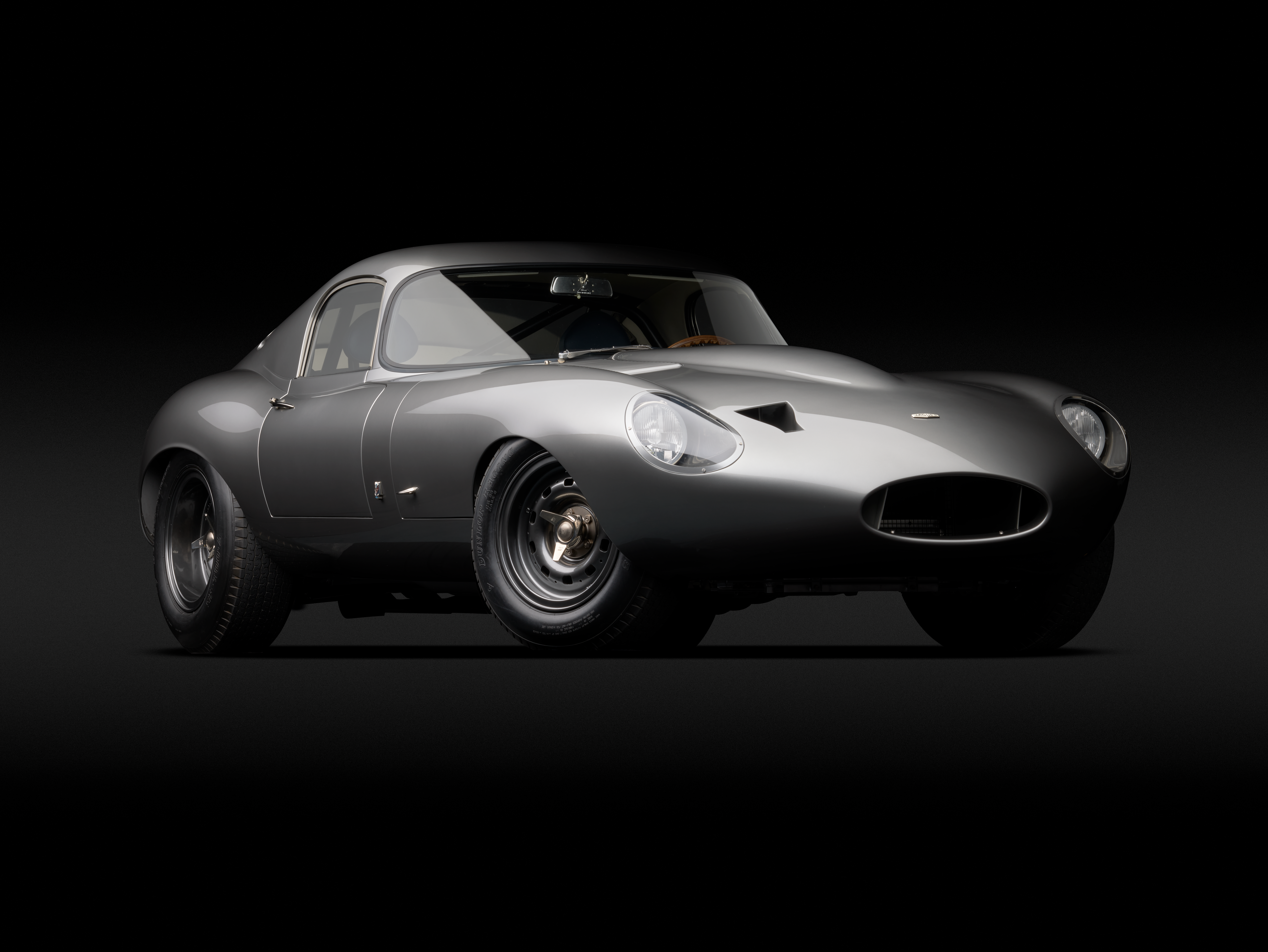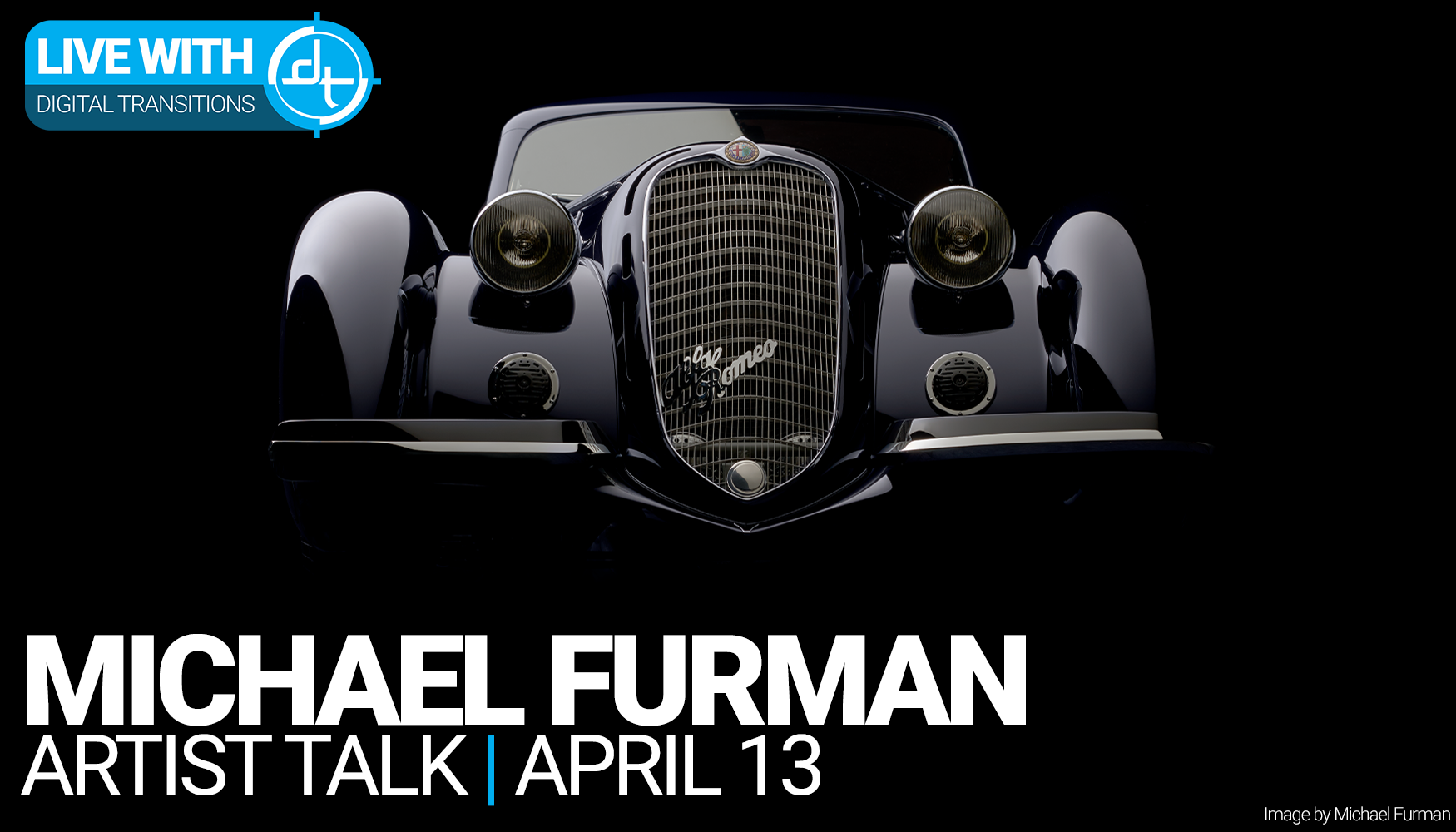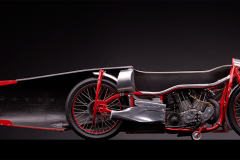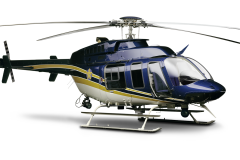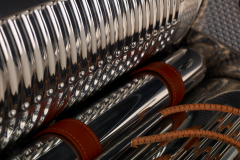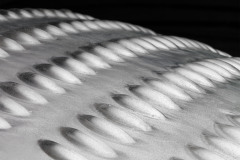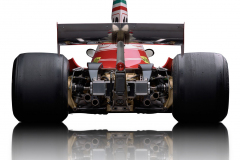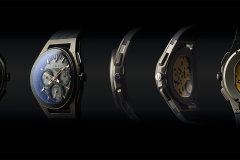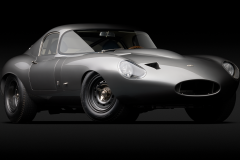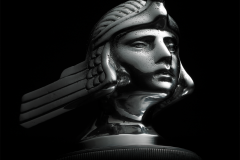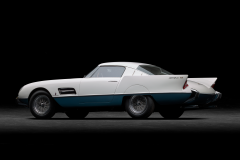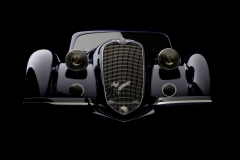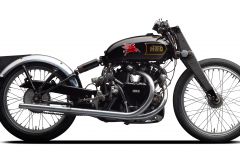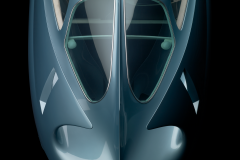Digital Transitions, Featured Photographer, Photographer Profile
Featured Photographer – Michael Furman
This month we are featuring the one-of-a-kind work of automotive photographer, Michael Furman. Michael’s enchanting passion for cars and cameras has led him to become one of the most sought-after photographers in the automotive industry. His work has been published in a variety of books such as; Speed, Style and Beauty, The Cars of the Ralph Lauren Collection, Delahaye Styling, and Design, The Art and Colour of General Motors, and even his own famous books; Motorcars of the Classic Era, Automobiles of the Chrome Age, 1946-1960.
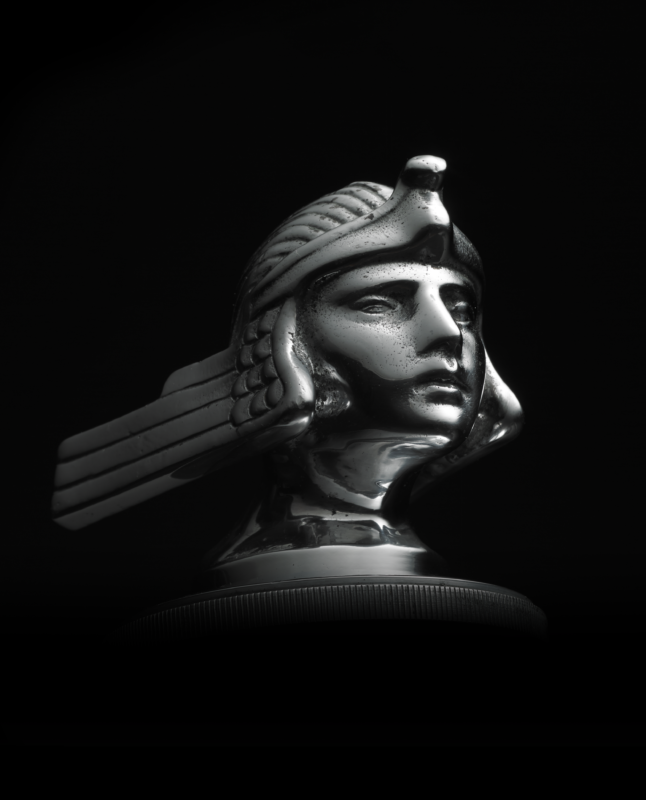
Describe your approach to photography— What makes your work unique?
I approach all of my work with the intention to properly express the essence of the subject in the simplest of terms. Nothing should be in the photograph unless it contributes to the communication of that essence. As part of this, I am very involved in the reproduction of my images and work closely with my printer to ensure the accuracy that my equipment allows.
What inspires you? Who are your influences?
Everything inspires me – from music and sculpture to the changing seasons, movies, and sports. My influences are not car photographers but the great portrait photographers and artists – Avedon, Penn, Caravaggio, Rembrandt, DaVinci, as well as the masters of photography – Adams, Cartier-Bresson, Lartigue, and Steiglitz…
What was your first camera?
An early 1960s Exacta VXIIB. It was a German camera and the first SLR (Leica was earlier but not an SLR). They were initially made in what became East Germany, but they later moved production to West Germany. Mine was a West German model which was not up to par.
Can you think of the first time you realized the camera you owned was holding you back?
That would have been in the mid-’60s with that Exacta. It was always broken which meant I was never sure if my shots would come out. It was completely manual which did allow me to learn more than I would have from a more automated camera with built-in metering and motor drive.
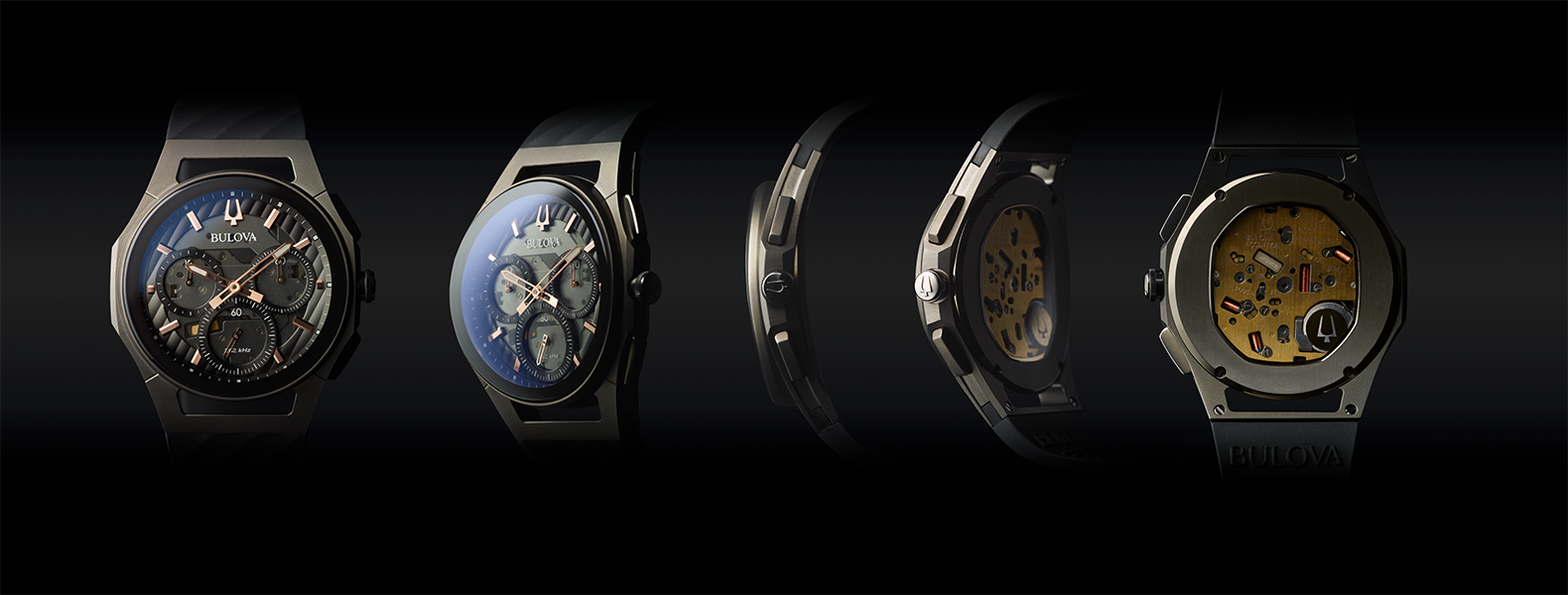
Describe your experience with DT and why you chose to shoot with Phase One gear.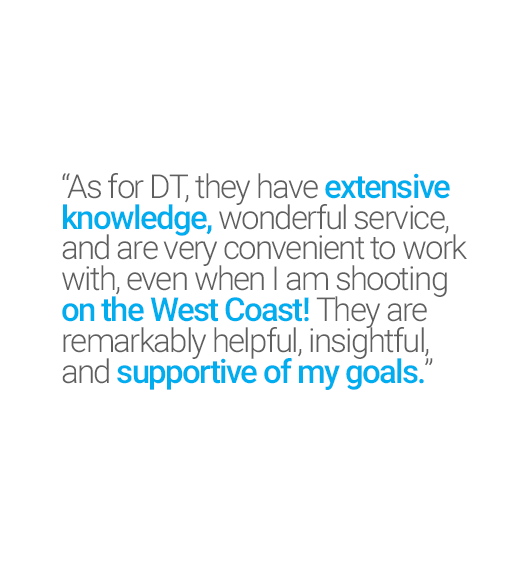
I chose to shoot digitally in the fall of 2000. I had been shooting large format film in Detroit and the studio I rented told me that the best commercial labs had closed because digital capture had taken over. Phase One was the preferred choice of the car shooters and when I got back to Philadelphia I ordered one to test. I have been shooting successfully with it ever since.
As for DT, they have extensive knowledge, wonderful service, and are very convenient to work with, even when I am shooting on the West Coast! I first worked with both Wayne and Lance before they came to DT. They were remarkably helpful, insightful, and supportive of my goals. Because of that, I chose to follow them when they started at DT. It was a wise decision on my part. Both gentlemen have seen me shoot a number of times and they are very conversant in my needs and how their products can improve my quality and workflow.
How long have you used Phase One gear? What equipment have you owned over the years?
I have been using Phase One digital backs since 2000. The first one was the H10 on a Mamiya RZ body. From there I progressed through an H20 and a P45 on a Hasselblad platform. That set-up served me beautifully for a number of years until I traded up to the Phase One XF IQ4 150 mp platform. Both Lance and Wayne insisted that I try the latest Phase One XF camera with the IQ4 150 mp back.
They advised me that there were a number of important new features in the system that would be very beneficial to the way I work. And of course, they were right. Each time Phase One upgrades the equipment or the Capture One software there is a noticeable improvement in quality and functionality. Somehow, Phase One is able to do that without completely moving away from the interface that I have grown used to over the past 20+ years.
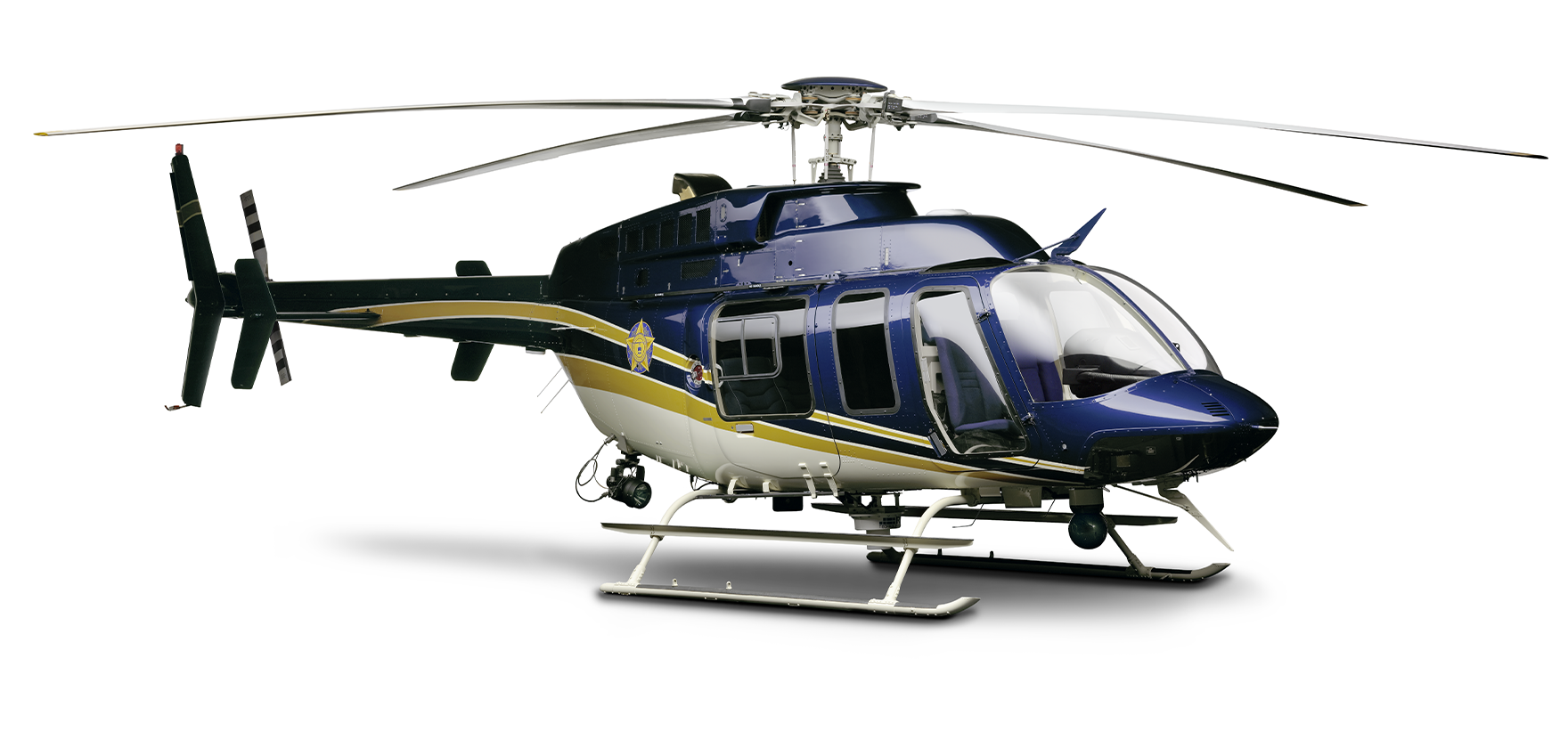
Tell us about one of the photos you’ve provided. You can describe the technical choices you made or the journey you took leading up to the photo or a combination of both.
The photograph of the helicopter was quite challenging. The craft is much bigger than my light bank. Imagine that when we shoot a car, the bank is 3 times larger than the car. In this case, the helicopter was twice as big as the light bank. To light it properly, we had to take 18 different captures and then stitch everything together.
What further complicated matters was the propeller. That meant we had to rotate the blades to move the light bank, and the blades reflected back into the glass and paint of the craft. The camera never moved and if we bumped it, all the effort would have to be restarted. If this sounds complicated, it was, but it worked!
What was your most difficult project?
Generally, the photography aspects are not what’s difficult. The greatest issues are related to scheduling, logistics, financials, and production concerns. I feel that by the time I get into the studio and my car is under the lights I am on vacation!
Tell us more about your published work in automotive books and how this has changed your business.
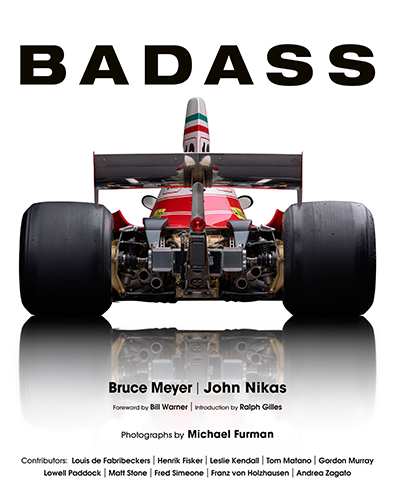
I had worked in the advertising realm for decades and by the late ‘90s, I was seeing trends that did not appeal to me. As I had a fair amount of automotive imagery in inventory, I thought to re-invent myself doing books on automobiles. My first publisher was a big name in NY who signed me to a four-book series. I did not like the way they printed the work, and when the opportunity arrived for me to take on a publishing project, I jumped at the chance.
You see, I put way too much time, effort, and money into making the photographs as good as they can be. I do this out of respect for the fantastic cars I am given to photograph. I felt the only way I could control the end result was for me to become the publisher, select the printer and work closely with them to achieve the best results. My printer, DT, and I all speak the same language and we all seek the finest reproduction available.
What’s the most interesting/surprising/invaluable thing you keep in your equipment bag?
My cell phone.
How did you make the transition to professional photography, and how did making a living from photography impact your style of shooting?
I started my own studio immediately upon graduating from R.I.T. in June of 1974.
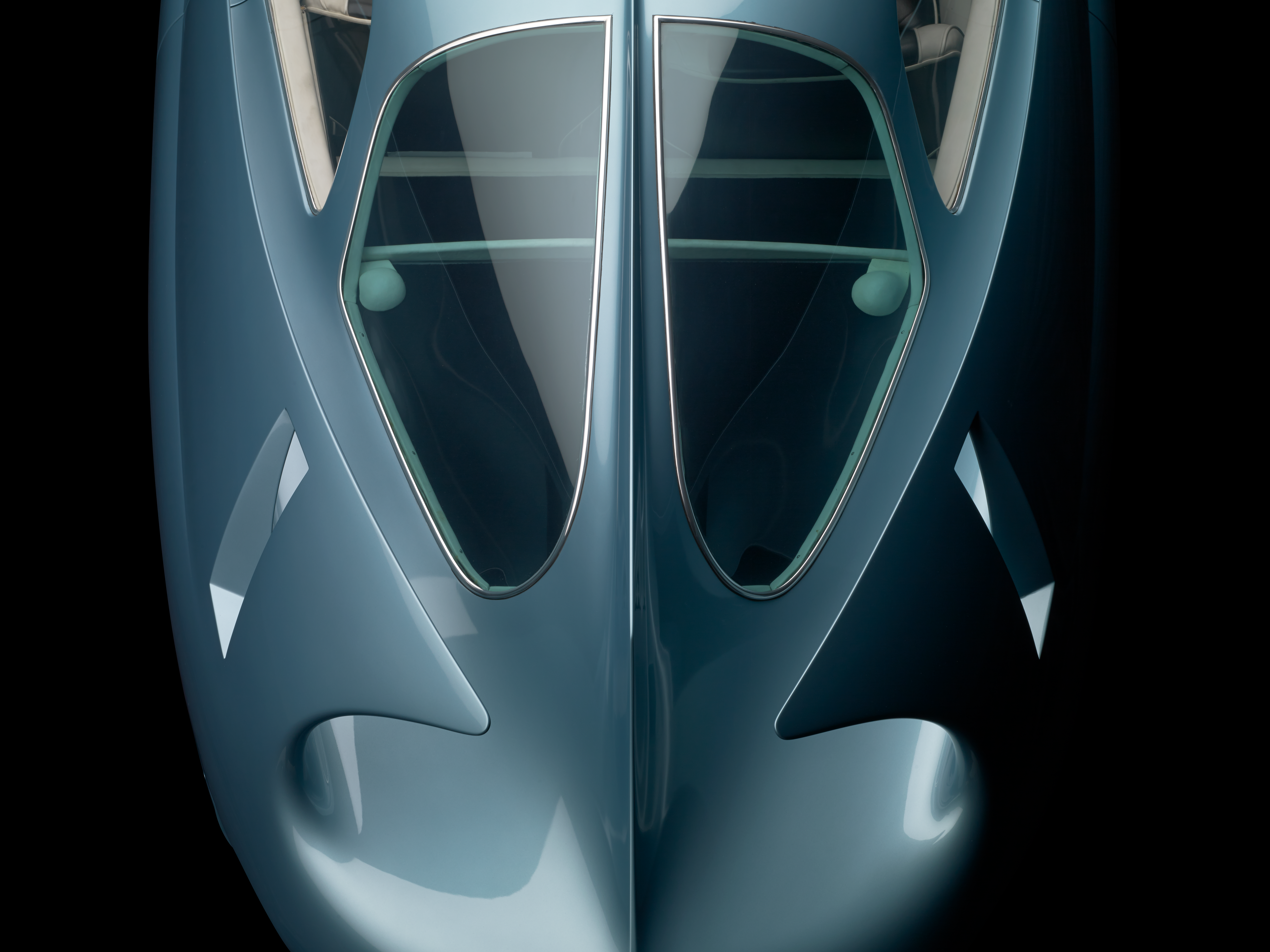
What is one thing you wish you knew when starting out?
I don’t tend to look backward so I can’t give you an honest answer.
Do you have a “passion project” that you enjoy working on in your free time?
I don’t really have free time, but my Passion Project would always be the one I am working on. I really love what I do and appreciate that I get to do it. This reminds me of a photographer friend who segregated his efforts into what he did for clients and what he did for himself. Needless to say, the work he did for himself was far superior. I consider everything I do is for myself.
What’s your favorite activity or hobby outside of photography that you’ve experienced recently?
With the lockdown, this past year, hanging out with my three dogs has made my days enjoyable.
You can see more of Michael’s work or on his website and Facebook.
Want to learn more about Michael? Join us for our live artist talk!
We are proud to present a special discussion with this month’s DT Featured Photographer, Michael Furman on April 13th at 2:00 PM ET. Michael will discuss his creative approach, one-of-a-kind projects, and why he shoots with Phase One medium format.
You can register for the webinar here.
More details to be announced.
GALLERY

